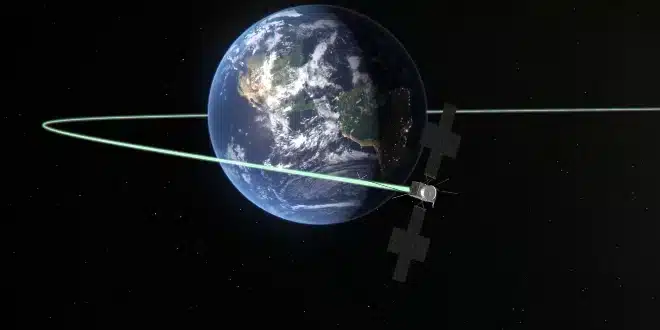The European Space Agency’s JUICE mission is poised to execute a groundbreaking maneuver that will set two new records. This will be the first instance of the spacecraft utilizing dual celestial bodies to perform a gravity assist maneuver, specifically aiming to execute a Lunar-Earth flyby.
The Lunar-Earth Gravity Assist (LEGA) is expected to conserve a significant amount of propellant, which will be utilized later in the mission. This complex maneuver, planned 15 years ago, requires the spacecraft to launch at a precisely timed second to align correctly with the Earth and the Moon.
How will ESA’s JUICE mission execute the flyby of the Moon and Earth? On Monday evening at 21:16 UTC (August 19), the spacecraft will orbit the Moon, reducing some of its velocity. About 25 hours later, it is slated to approach Earth, which will further decrease its speed and set it on a trajectory towards Venus. This part of the mission tolerates no errors.
“It’s akin to speeding through an extremely narrow corridor: hitting the gas pedal to the fullest while the margins are only millimeters wide,” explained Ignacio Tanco, the Spacecraft Operations Manager.
Dr. Olivier Witasse, a planetary scientist involved with the mission’s scientific aspects, highlighted the mission’s significance during a conversation with IFLScience. He noted that a primary goal is to explore potential habitable zones within the icy moons such as Europa, Ganymede, and Callisto.
The team anticipates that the fuel savings from this maneuver will allow the JUICE spacecraft to orbit about 200 kilometers (about 120 miles) from the surface of Jupiter’s moon Ganymede, enabling precise observations. The flyby will help position the spacecraft in the correct orbit and speed, ensuring that the onboard instruments are functioning optimally. This setup will allow scientists to test an entire array of instruments that couldn’t be fully assessed in laboratory conditions.
“This will be an excellent test to verify the performance of the radar in the setting of the fully operational spacecraft,” said Nicolas Altobelli, another ESA planetary scientist, during a press conference.


